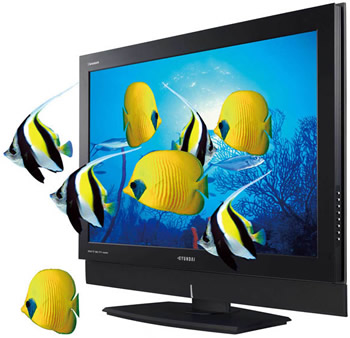 A few years ago, the big push for consumer TVs was with HD broadcasts. Today the market is flooded with HDTVs and many consumers are now enjoying the HD broadcasts around the globe. The future of TV in the home will be 3D and the technology that is needed for 3D broadcasts is developing quickly.
A few years ago, the big push for consumer TVs was with HD broadcasts. Today the market is flooded with HDTVs and many consumers are now enjoying the HD broadcasts around the globe. The future of TV in the home will be 3D and the technology that is needed for 3D broadcasts is developing quickly.
LG Electronics and SkyLife have now announced a new partnership in Korea that will have the TV maker and the content provider working together to create a 3D ecosystem that will see LG producing 3DTVs and SkyLife offering 3D broadcasts to consumers in Korea.
“LG is the first TV manufacturer in the world to cooperate with a digital satellite broadcaster to map the standards for 3D images ranging from technologies, to devices and broadcasting content,” said Dr. Woo Paik, President and Chief Technology Officer at LG Electronics. “The partnership will focus on developing technology that helps produce 3D images that don’t cause eye strain or dizziness — an issue that has plagued previous technologies.”
LG reports that it plans to introduce a range of 3DTVs in sizes from 42-inches to 72-inches in 2010 and it has already introduced a 47-inch LCD 3DTV this year. 3D functionality will also be added to high-end LG TV sets next year and projectors that are 3D ready will be unveiled as well. These projectors will be capable of producing 3D images as large as 150-inches.
LG will be producing 3DTVs that use two technologies. One type of TV will require the use of active shutter glasses. The other 3DTV tech will use a passive filter applied over the screen that won’t require the use of glasses. LG reports that it has also developed a new 3D chip that supports various 3D technologies.
LG and SkyLife will both be investing in 3D content and the first 3D broadcast for the partnership is set to be the FIS Snowboard World Cup. To start with, the 3D content trail will be in Korea only, but LG has plans to start similar projects in America and Europe. LG plans to sell 400,000 3DTVs in 2010 and then boost that number to 3.4 million units in 2011. The big build up for 3D technology is leading to the London Olympics in 2012 that are set to be broadcast in 3D.
“SkyLife aims to be the top digital satellite 3D broadcaster in Korea. We expect the partnership between LG and SkyLife to propel us to the lead in digital new media. We plan to invest KRW 30 billion (USD 25 million) in creating 3D content in collaboration with LG,” said Mong-ryong Lee, President and CEO at SkyLife.
AMD is set to show off stereoscopic 3D Blu-ray movies at CES 2010 kicking off in January. CES 2009 saw the unveiling of the NVIDIA active glasses 3D system that allowed gamers to play PC games with 3D effects rivaling those seen in theaters.
In November 2009, analysts reported that the interest in 3DTV was increasing alongside an increase in the growth of 3D technology.


